

Blooms Taxonomy According to Seinfeld. SAGE Advice for New Teachers. I recently re-connected with a former 6th grade student of mine.
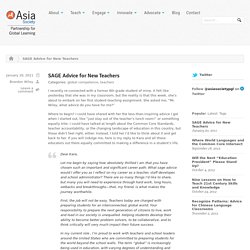
It felt like yesterday that she was in my classroom, but the reality is that this week, she’s about to embark on her first student-teaching assignment. She asked me, “Mr. Wiley, what advice do you have for me?” Where to begin? I could have shared with her the less-than-inspiring advice I got when I started out, like “just stay out of the teacher’s lunch room!” Personalized Learning Chart Version 3. Many, Many Examples Of Essential Questions. Many, Many Examples Of Essential Questions by Terry Heick Essential questions are, ask Grant Wiggins defines, “‘essential’ in the sense of signaling genuine, important and necessarily-ongoing inquiries.”
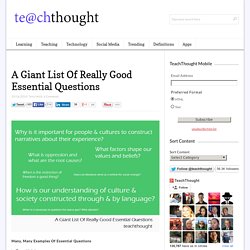
These are grapple-worthy, substantive questions that not only require wrestling with, but are worth wrestling with–that could lead students to some critical insight in a 40/40/40-rule sense of the term. I collected the following set of questions through the course of creating units of study, most of them from the Greece Central School District in New York. Many, Many Examples Of Essential Questions. 13 Strategies to Improve Student Classroom Discussions. Coffee Shops Are Better Than Classrooms - Looking UpLooking Up. The commercial and cultural success of the “Harry Potter series” of books is well know.

Less well-known is that the books were written in a coffee shop. J.K. Rowling, then a single mother on income support, would set out pushing her child through the streets of Edinburgh. Deeper Learning in Schools. An Open Letter to Ninth Graders. Dear First-Year High School Students, I am one of the co-editors of What Is “College-Level” Writing?
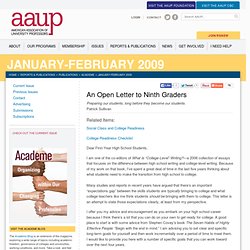
—a 2006 collection of essays that focuses on the difference between high school writing and college-level writing. Best Practice.
Elementary Science Lesson Plan - What Is Science? Badass Teachers Association. 40 more maps that explain the world. Maps seemed to be everywhere in 2013, a trend I like to think we encouraged along with August's 40 maps that explain the world.
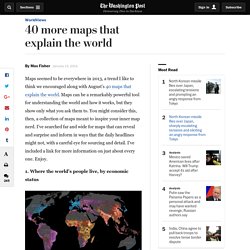
Maps can be a remarkably powerful tool for understanding the world and how it works, but they show only what you ask them to. You might consider this, then, a collection of maps meant to inspire your inner map nerd. The Happy Movie. 25 Tricks to Stop Teacher Burnout - InformED : Teaching Kids to Code. Every era demands--and rewards--different skills.
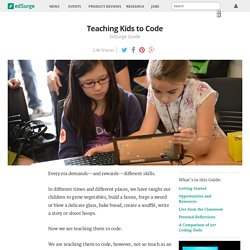
In different times and different places, we have taught our children to grow vegetables, build a house, forge a sword or blow a delicate glass, bake bread, create a soufflé, write a story or shoot hoops. The Difference Between Instructivism, Constructivism, And Connectivism - The Difference Between Instructivism, Constructivism, And Connectivism by Terry Heick We spend so much time in education trying to make things better.
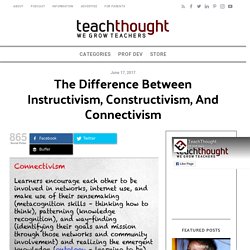
Better policies. Better technology. Better standards. Better curriculum. Better instruction. Design Thinking for Educators Toolkit. The Design Thinking for Educators Toolkit contains the process and methods of design adapted for the context of K–12 education.
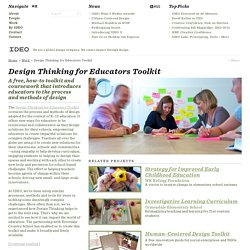
It offers new ways for educators to be intentional and collaborative as they design solutions for their schools, empowering educators to create impactful solutions for complex challenges. Teachers all over the globe are using it to create new solutions for their classrooms, schools and communities—using empathy to help develop curriculum, engaging students in helping to design their spaces and working with each other to create new tools and processes for school-based challenges. The effort is helping teachers become agents of change within their schools, driving new small- and large-scale innovations. At IDEO, we’ve been using similar processes, methods and tools for years in tackling some dauntingly complex challenges. Grmr.me.
The 21st century classroom. Doesn't just focus on "what" kids learn, it focuses more on "how" kids learn best...
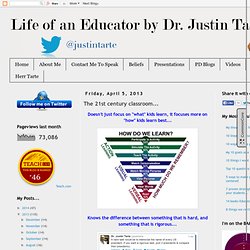
Public Interest Game Design and Research Lab for Interactive Media. Learning Principles - Teaching Excellence & Educational Innovation. The following list presents the basic principles that underlie effective learning.
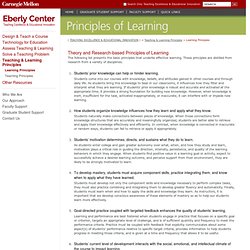
Understanding by Design (9780871203137): Grant Wiggins, Jan McTighe, Jay McTighe. Understanding by Design: Backward Design. Chapter One of Understanding by Design is an introduction to the concept of Backward Design, which I think is best summarized in Wiggins and McTighe’s statement that “We [teachers] cannot say how to teach for understanding or which material and activities to use until we are quite clear about which specific understandings we are after and what such understandings look like in practice” (14-15). In other words, we need to know what we want the end result to be before we plan. This might seem obvious, but we don’t do it as much as we should. Most books discussing goal-setting advise readers to visualize the end and then determine how to get there.
What I know I have done at times is what the authors describe as “throw[ing] some content and activities against the wall and hop[ing] some of it sticks” (15). Ouch. Understanding by Design. Understanding by Design, or UbD, is a tool utilized for educational planning focused on "teaching for understanding" advocated by Jay McTighe and Grant Wiggins in their Understanding by Design (1998), published by the Association for Supervision and Curriculum Development.[1][2] The emphasis of UbD is on "backward design", the practice of looking at the outcomes in order to design curriculum units, performance assessments, and classroom instruction.[3] "Understanding by Design" and "UbD" are registered trademarks of the Association for Supervision and Curriculum Development ("ASCD").
According to Wiggins, "The potential of UbD for curricular improvement has struck a chord in American education. Technology and the myth of education's golden past. Disruptive Force. Poetry 180 - Home Page. Welcome to Poetry 180. Poetry can and should be an important part of our daily lives. Poems can inspire and make us think about what it means to be a member of the human race. StoryCorps. Welcome. Storyline I: An Introduction & Storyline Revisited Are you ready to learn what makes the Storyline Method so successful in the classroom? The Storyline I: An Introduction course is for K-12 teachers who wish to learn how to integrate curriculum using the Storyline method. Participants will experience a Storyline unit both as a student in the process, as well as observer of the teaching method.
Bloom's Digital Taxonomy. Now You See It // The Blog of Author Cathy N. Davidson » The Chronicle of Higher Education: Invisible Gorillas are Everywhere. January 23, 2012 By William Pannapacker By now most everyone has heard about an experiment that goes something like this: Students dressed in black or white bounce a ball back and forth, and observers are asked to keep track of the bounces to team members in white shirts. Save The Pacific Northwest Tree Octopus. Help Save The ENDANGERED. Education - Teaching and Learning Resources. 21st Century Education vs. 20th Century Education. The Iridescent Classroom. JAM Program Overview Video. Rethinking Schools. Complicating “White Privilege” By PAUL C. GORSKI. Diversity, Equity, Multicultural, Cultural Competency, and Social Justice Research, Essays and Scholarship. Welcoming Schools - School Bullying Resources, Family Diversity Training and Tools for Educators.
Planning to Change the World — Planning to Change the World. Instructional Design. Bloom's and ICT tools. Many teachers use Bloom's Taxonomy and Bloom's Revised Taxonomy in developing and structuring their teaching & learning experiences. Bloom's Digital taxonomy is an attempt to marry Bloom's revised taxonomy and the key verbs to digital approaches and tools. Home.
EduGraphics. Class Size Matters homepage. STE[+a]M is the inclusion of Arts[+a] with Science, Technology, Engineering, Math [STEM]. Design Thinking for Educators. Word Generation - Developing Academic Language. Brain science and cognitive neuroscience for children and teachers. If you are a fan of the science fiction Star Trek series, then you are familiar with the Holodeck.
It is a virtual reality in which Star Trek characters can interact with virtual people and environments. A person in the Holodeck “room” can move around, interacting with the environment, and talking and interacting with the virtual and “real” people in the room. For example, in one Star Trek episode set nearly 300 years in the future, Isaac Newton, Albert Einstein, and Steven Hawking join the Star Trek character Lt. Commander Data in a bridge game.